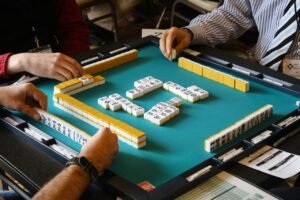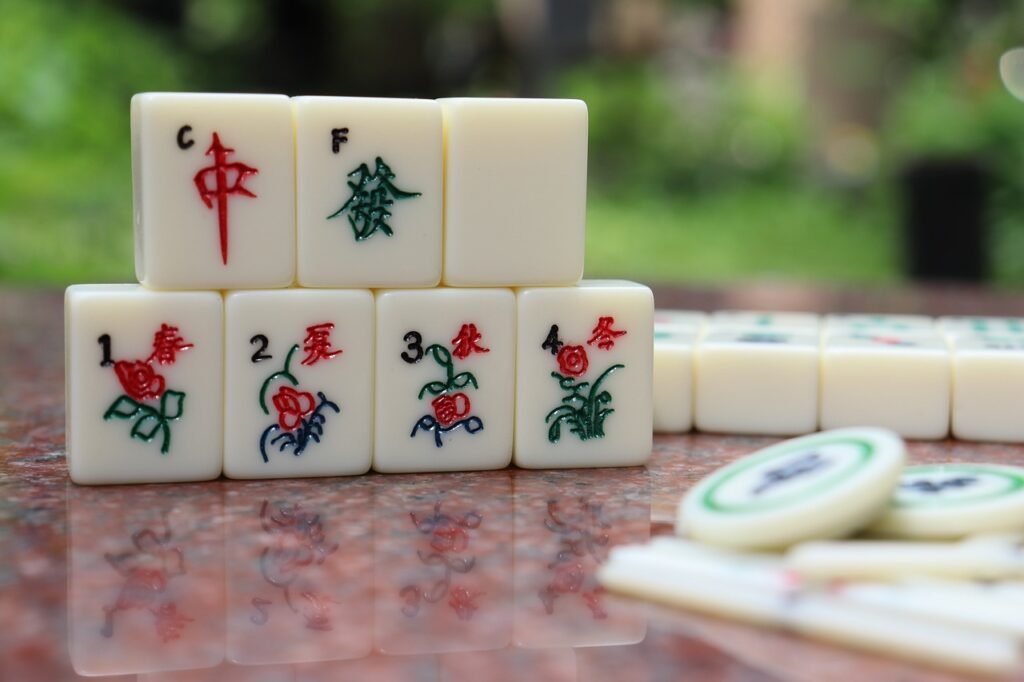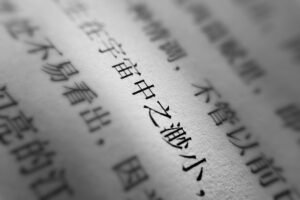Mahjong, which is pronounced “májiàng” (麻將) in Mandarin, is a pillar of Chinese Culture that is intertwined profoundly into Chinese society and traditions. Mahjong, which began in the eastern provinces of China in the 19th century, has since developed into a symbol of Chinese social life and Culture.
Table of Contents
ToggleHistorical Background and Origins
Mahjong’s history is as colorful and complex as the challenging games it entails. The provinces of Jiangsu, Zhejiang, and Shanghai are thought to have given birth to the game in the 19th century. Many people believe that Mahjong descended from earlier card games, particularly mádiào (马吊), an old game played with a deck of 40 cards that was well-liked in the Qing Dynasty.
Mahjong experienced a rise in popularity and a global expansion during the 20th century. The game’s rules were standardized in the 1920s by an American traveler named Joseph Park Babcock, making it more approachable to Western audiences. Mahjong, however, was predominantly spread by Chinese immigrants, solidifying its position in Chinese diasporic Culture worldwide.
Rules and Gameplay
Mahjong is a game that beautifully marries strategy, skill, and a dash of luck. Typically involving four players seated around a square table, the game utilizes a set of 144 tiles. These tiles are split into suits, including bamboo (zhú – 竹), characters (wàn – 万), and dots (tóng – 筒), in addition to honor tiles like winds (fēng – 风) and dragons (lóng – 龙).
Players each begin with a hand of 13 tiles, and the goal is to form a “mahjong” – a winning hand consisting of four sets and a pair. A set can be a “pung” (pēng – 碰) – three identical tiles, a “chow” (chì – 吃) – three consecutive numbers in the same suit, or a “kong” (gàng – 杠) – four identical tiles.
The gameplay unfolds with players drawing and discarding tiles in succession until either a player assembles a winning hand or all the tiles are drawn, leading to a stalemate. The game’s complexity is derived from the various strategies employed in deciding which tiles to discard or retain, making Mahjong a truly fascinating game.
Cultural Significance
Mahjong is more than just a pastime. It embodies many aspects of Chinese philosophy and cultural ethos. In Chinese Culture, the four winds in Mahjong are representative of the four cardinal directions: North (běi – 北), South (nán – 南), East (dōng – 东), and West (xī – 西). Additionally, the three “dragons” symbolize Confucian cardinal virtues: Red for Benevolence (hóng zhōng – 红中), Green for Sincerity (fā cài – 发财), and White for Filial Piety (bái bǎn – 白板).
Beyond its philosophical implications, Mahjong is essential in Chinese social interactions. Many cities have mahjong parlors that serve as places for friends and family to congregate, socialize, and occasionally bet. It’s more than simply a game; it’s a social tradition that develops fellowship, conversation, and a sense of belonging.

Global Impact and Influence
Mahjong has a significant global impact that goes far beyond China. Thanks to Chinese immigrants, the game has become popular in many nations, including the United States, Japan, and the Philippines. The game has evolved into variants specific to each location, including American Mahjong and Filipino pung.
Mahjong has recently become more widely used online and through mobile applications. Mahjong is now more accessible to a global audience because it is simpler for individuals to learn and play the game.
Conclusion
At its core, Mahjong mirrors Chinese Culture, which is rich in history, philosophy, and social customs. The essential beauty of the game resides in its capacity to unite players, even though the tiles, rules, and strategies add to its interest. Despite being a game, Mahjong serves as a cultural touchstone, a link that millions of people, whether they live in China’s thriving cities or halfway around the world, use to connect to the rich tapestry of Chinese Culture. Mahjong continued to resound the heartbeat of Chinese heritage over the globe in the clatter of moved tiles and shared laughter.
FAQ
1. How many people can play Mahjong?
Four players often play Mahjong. However, other iterations of the game support three or five players.
2. Is Mahjong a game of luck or skill?
Mahjong is a game that combines both luck and skill. While the drawing of tiles involves luck, a player’s strategy in assembling sets and choosing which tiles to discard requires considerable skill.
3. Are the rules of Mahjong the same everywhere?
No, the rules can differ significantly depending on the region. For instance, American Mahjong, Japanese riichi, and Hong Kong mahjong have unique rules.
4. Is mahjong only a gambling game?
Mahjong is frequently linked to gambling, particularly in movies and popular culture, yet it can be played for fun without betting. Many people participate in it because it promotes conversation and intellectual challenge.
5. Can I play Mahjong online?
Yes, you may play Mahjong with players worldwide on various online platforms and mobile apps. These online distribution channels have also been crucial in getting the game in front of new players.
REGISTER for our SUMMER CAMP in 2023!
Learn about our Internship Program in China.
Learn about holidays in China in 2023.
Get free Chinese learning resources.








